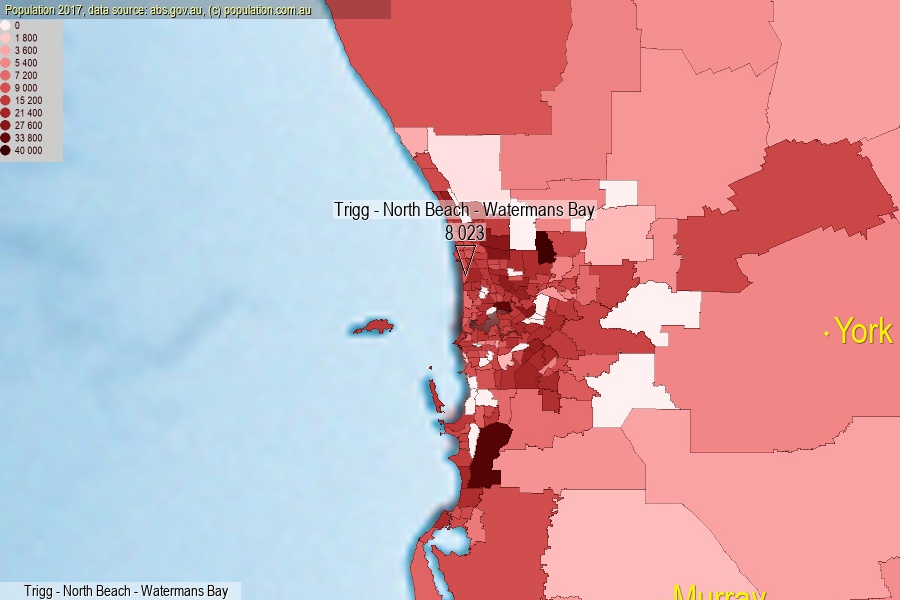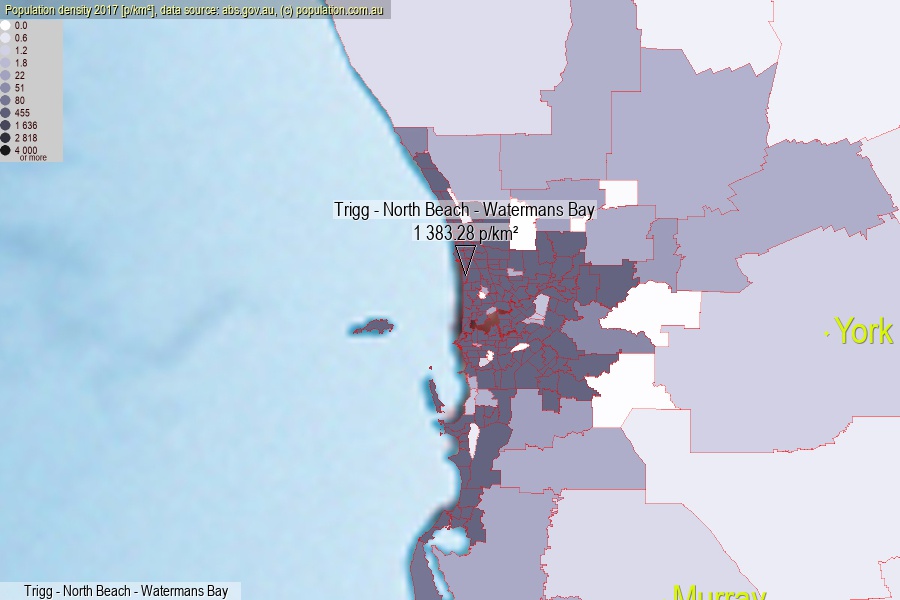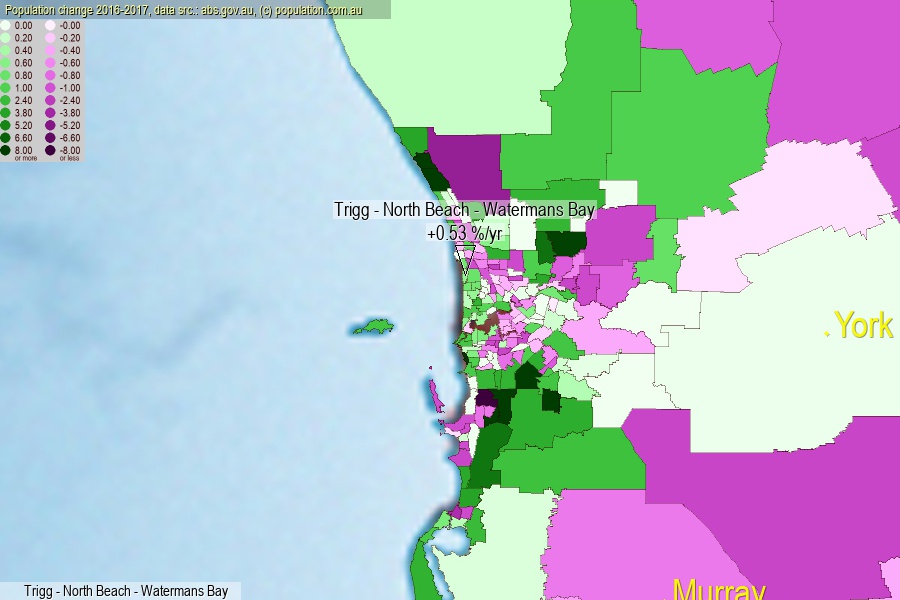 population.com.au
population.com.auLast official estimated population of Trigg - North Beach - Watermans Bay (as Statistical Area Level 2) was 8 023 people (on 2017-06-30)[2]. This was 0.03% of total Australian population and 0.31% of WA population. Area of Trigg - North Beach - Watermans Bay is 5.80 km², in this year population density was 1 383.28 p/km² . If population growth rate would be same as in period 2016-2017 (+0.53%/yr), Trigg - North Beach - Watermans Bay population in 2025 would be 8 367. [0]



Click to enlarge. Trigg - North Beach - Watermans Bay is located in the center of the images.
Population [people], population density [p./km²] and population change [%/year] [2]
View borders » (new window) [4]
[1991-1992] -1.61 %/Yr.
[1992-1993] -2.72 %/Yr.
[1993-1994] -0.69 %/Yr.
[1994-1995] -0.56 %/Yr.
[1995-1996] +0.12 %/Yr.
[1996-1997] +0.77 %/Yr.
[1997-1998] +0.56 %/Yr.
[1998-1999] +0.61 %/Yr.
[1999-2000] +0.67 %/Yr.
[2000-2001] +0.98 %/Yr.
[2001-2002] -0.49 %/Yr.
[2002-2003] +0.09 %/Yr.
[2003-2004] +0.24 %/Yr.
[2004-2005] +0.16 %/Yr.
[2005-2006] +0.64 %/Yr.
[2006-2007] +1.48 %/Yr.
[2007-2008] +0.98 %/Yr.
[2008-2009] +0.91 %/Yr.
[2009-2010] +0.73 %/Yr.
[2010-2011] +1.81 %/Yr.
[2011-2012] +3.04 %/Yr.
[2012-2013] +2.33 %/Yr.
[2013-2014] +0.95 %/Yr.
[2014-2015] +0.24 %/Yr.
[2015-2016] +0.18 %/Yr.
[2016-2017] +0.53 %/Yr.
[0] Calculated with linear interpolation from officially estimated population
[1] Read more about SA2 and Australian Statistical Geography Standard (ASGS) on abs.gov.au
[2] Population data from Australian Bureau of Statistics (Population and density: 2017; change: 2016-2017)
[3] Digital Boundaries: Australian Statistical Geography Standard (ASGS) 2016.
[4] Border coordinates are simplifyed using Ramer-Douglas-Peucker algorithm.